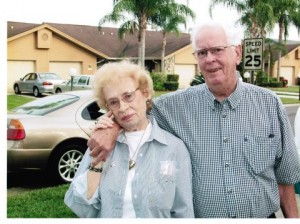by Katherin Seaborn
Published December 30, 2011 in New Ideas
As the year ends, we’re inundated with “Best of” or “of the Year” lists: “Best Movies of the Year,” “Song of the Year,” “2011’s Best Restaurants,” and so on. E! is tweeting about whether its’ “Celeb of the Year” is Robert Pattinson or Kristen Stewart; Grantland declared this Ryan Gosling’s break-out year, and Jezebel’s Woman of the Year shortlist includes Gabby Giffords, Elizabeth Warren and Hillary Clinton. While all of these are deserving in their own right and realm, have no doubt.
This was the Year of Kate.
The ring. The hair. The wedding. The bridesmaid. The North American tour. Everything about her year was fantastic (from the my point of view, at least), and while one could argue that her tangible effect on the world was minimal, her effect on retail was not. UK-based retailer Reiss was one of the most obvious benefactors of the “Kate Middleton Effect”, posting a near doubling in profits after she wore one of the brand’s dresses in her engagement photo. The mad scramble to purchase the dress she wore during an official visit by the Obamas crashed the company’s website. If you google “Kate Middleton Sapphire Ring” replica, you get 893,000 hits, with pricetags ranging from $6 to $10,000. My mother, a reasonable 50-something woman who’s not that into jewelry, got one. Even I, who have lived in London and have respect for, but no delusions about, Britain’s monarchy, instructed my hairdresser prior to a wedding this year that I wanted “Kate Middleton hair.”
So if Kate Middleton is appeals to women, how are retailers marketing to women on the back of this phenomenon? Reiss, for one, is merely standing aside and letting Kate do the work. An article on Kate’s “Midas touch” in Britain’s Daily Mail commented:
“Notoriously guarded about its clientele, Reiss declines to discuss Catherine’s endorsement, simply saying that the Duchess has long been a loyal customer at Reiss and always looks stunning.
Privately though, staff admit to being ‘delighted,’ a sentiment that is no doubt echoed from the shop floor right up to the boardroom.”
Kate Middleton is appealing to many women because she is the antidote to all the Kims and Lindsays of the world; she’s elegant, not showy, refined instead of gaudy. Make no mistake, though, this presentation is on purpose. She is marketing herself, albeit in a much more subtle way than, say, Gaga. Reiss made the wise choice of doing the same; sometimes the most intelligent marketing to women doesn’t look like marketing at all.
share the love:


 Facebook is about “talking” “sharing life,” it is not just about simplifying and integrating both their real lives with their virtual ones seamlessly, but actually becoming an extension of themselves from the moment they wake up, at home, while commuting, at work, with friends, at parties. It is a two-way conversation where they can engage, chose who to engage with at all times. It is social facetime value as opposed to a popularity contest.
Facebook is about “talking” “sharing life,” it is not just about simplifying and integrating both their real lives with their virtual ones seamlessly, but actually becoming an extension of themselves from the moment they wake up, at home, while commuting, at work, with friends, at parties. It is a two-way conversation where they can engage, chose who to engage with at all times. It is social facetime value as opposed to a popularity contest.











